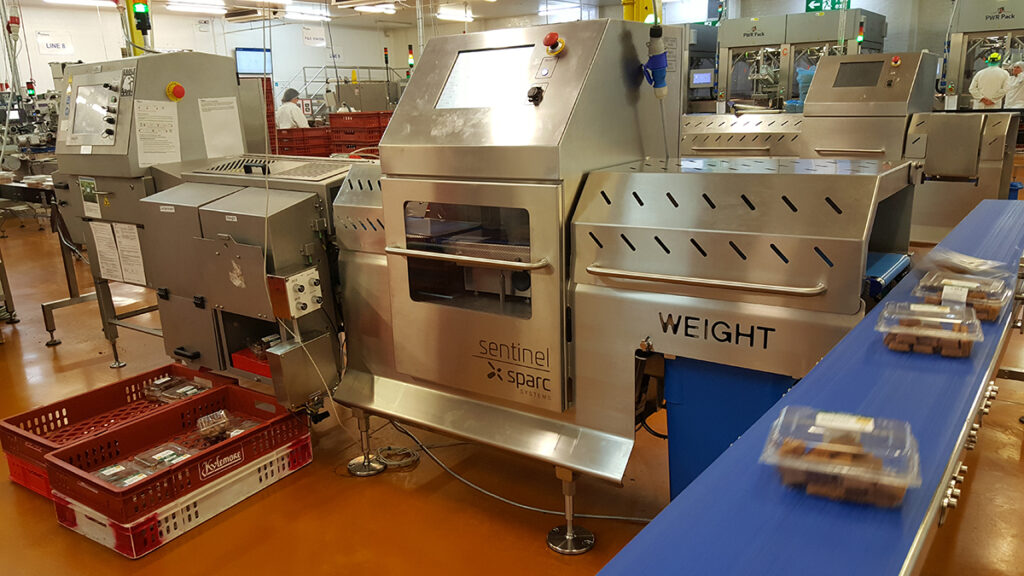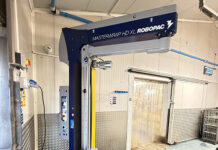
Charlie Graham, European sales manager at Sparc Systems suggests that the data generated by advanced checkweighers is better than having your own crystal ball
THE global market outlook for automatic checkweighers is strong, with industry reports predicting rapid growth of approximately 4.6% CAGR each year between 2019 and 2027. The projected expansion is likely to be propelled by a number of factors, from awareness among FMCG manufacturers about the deployment benefits of checkweighing technology to strict regulatory mandates regarding the packaging of food products.
And yet, there is still plenty of untapped potential for the utilisation of automation and data collection at this critical point in the food production process. More modern machines have refined the process beyond achieving high speeds, providing significant feedback data needed for quality control and interfacing with other machinery to make adjustments autonomously. When used in the right way, the upfront cost of a checkweighing machine will soon provide a return on investment.
Driving down costs with communication technology
Greater efficiency can be achieved through the use of current network techniques, with high-speed communication technologies such as a secure Ethernet capable of integrating checkweighers into groups. These results can be pooled across multiple lines of identical product groups and pack sizes to calculate an average batch weight.
In this instance, consider the units as a finely-tuned orchestra containing separate musicians who work in harmony as one. A group of checkweighers with Ethernet connection processing identical products and packages can be regarded as one line for the purposes of weight control. This means one line can augment the results of another.
For example, if one system has an average weight below the declared quantity of a product, taken alone the checkweigher would have to reject packs to bring that average up. However, virtual checkweighing allows this machine to be complemented with another unit that is running with a high average weight.
Upon inspecting each pack, the checkweigher broadcasts the average weight so far in the batch. Concurrently, it listens to the broadcasts via an Ethernet local area network from the other units of the same group. The checkweigher then calculates the average weight of the group and automatically decides whether or not to reject each pack based on overall performance.
The result? A reduction of unnecessary rejects and subsequent wasted product. These benefits are highly valuable to any manufacturing plant, particularly as those in the food sector face increasing pressure from all directions.
False rejects remain a significant issue within the industry. Not only do they have implications for accurate pack weight control, but also for profitability.
Lower factory yield due to repeated false rejects frequently undermine the cost-effectiveness of an entire operation, while repeated stoppages and trouble-shooting will incur unnecessary costs.
Market estimates put the cost per line of false rejects at over £11,000, depending on the scale of the problem. These statistics serve to highlight the impact checkweighing technology and communication software can have on efficiency and, when used in the right way, can lead to significant bottom line savings.
Integrated technology for full traceability
Besides reducing false rejects and product waste, the use of modern network technologies allow for automatic data transmission. With integrated data collection software, everything from trends, pack rates and live OEE data is instantly reported. Production and QA personnel can then utilise the information to monitor and fine-tune production line performance, even prior to the weight check process.
As an example, if a meat manufacturer finds inconsistencies in the size of meatballs, this indicates that the processing machinery is not running accurately. Beyond highlighting this fault, precision systems, such as Sparc’s Sentinel checkweigher, provide a controlled feedback signal to upstream automation equipment used to portion food products. This signal specifies when to increase or decrease the fill quantity accordingly, eliminating the need for human intervention.
These benefits are made all the more prevalent when integrated with existing or combined inspection technologies such as metal detection and x-ray. The inspection machines market is projected to rise at a CAGR of 5.5% between now and 2024, with combination systems estimated to grow the most during the forecast period. A number of factors are attributed to outlook reports, from demand for inline product inspection to growing need to comply with GMP requirements and smaller factory footprints.
Combination systems bring food factories one step closer to the vision of a smart factory, whereby connected devices work alongside each other to reduce contamination, ensure food safety compliance and boost traceability and efficiency.
With this vision in mind, Sparc recently assisted in the collaboration with Fortress Technology to unveil the Raptor Combi – a flexible, fast and affordable fully integrated checkweigher and metal detector.
The Raptor’s universal design gives manufacturers the option to purchase a standalone Sparc checkweigher, and attach a complimentary Fortress Stealth metal detector at a later date to meet different phases of a production and inspection investment strategy. Featuring a single swipe touchscreen HMI and paperless audit software with unlimited pre-programmed retailer Codes of Practice, the system captures all the data required to guarantee absolute traceability. Given that most food manufacturers supply multiple retailers, automating the test principles increases speed and accuracy, leading to cost savings down the line.
The factory of the future
Flexibility is also important to consider when specifying checkweighing technology – and is one where smart, automated features can help. As well as retailer COP parameters, an HMI touchscreen panel used to calibrate numerous inspection machines within the same food factory addresses the increased need for visual packaging control due to smaller batch sizes and the avoidance of mistakes during product switchovers.
Integrated technology that provides access to machine functions with the click of a button reduces the changeover time of different products, pack sizes and formats while ensuring consistent compliance with international weight and measurement standards. In some cases, up to 50% less time is required for set-up as all features are accessible from one screen.
Although widely embraced by consumers, deployment of digital technologies in industrial settings, particularly multi-site food factories has been slower to materialise. Yet things are shifting as manufacturers are waking up to the benefits of smart technology. In the case of checkweighing inspection systems, incorporating greater interoperability, enhanced information transparency and decentralised decisions paves the path to the factory of the future.













